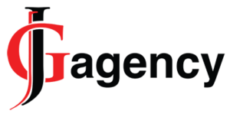Mastering SaaS Keyword Research
Competitor Keyword Analysis
Look, if you want to play in the big leagues of SaaS keyword research, you gotta check out the competition. Scoping out the keywords your rivals are killing it with is like peeking into their playbook. It’s not just being nosey; it’s smart business. You’ll uncover some hot insights and spot those juicy keyword gaps just waiting to be filled by little ol’ you.
Kicking things off with this competitor keyword analysis doesn’t have to be rocket science. There’s some nifty tools out there like Ahrefs, SEMrush, and Moz that’ll do the heavy lifting. They’ll spill the beans on search volumes, how difficult those keywords are to rank for, and if they’re hitting the mark for your audience.
| Competitor | Top Keywords | Monthly Search Volume | Keyword Difficulty |
|---|---|---|---|
| Competitor A | SaaS marketing strategies | 2,500 | 45 |
| Competitor B | B2B SaaS content marketing | 1,800 | 50 |
| Competitor C | SaaS lead generation tactics | 1,200 | 38 |
Data from the folks over at SEO Clarity.
Here’s how you can go through an ace competitor keyword analysis:
- Pinpoint your top competition in the scene.
- Roll up your sleeves and use SEO tools to dig out what keywords they’re rocking.
- Take a closer look at their content, the on-page SEO shenanigans, and their backlink game.
- Size up what they’re doing against your approach and tweak your keyword list as needed (Measure Marketing).
Utilizing Keyword Research Tools
In the world of SaaS, having killer keyword research tools in your back pocket is a game-changer. They’re your secret weapon for targeting those gold-nugget keywords. Trusty pals like Google Keyword Planner, Ahrefs, SEMrush, and Moz offer that sweet intel to fine-tune your game plan.
Here’s what these tools bring to the table:
- Search Volume: See how much buzz a keyword gets.
- Keyword Difficulty: Check if you’ve got a shot at ranking for it.
- Relevance: Make sure the keyword vibes with your content goals.
| Tool | Search Volume | Keyword Difficulty | Relevance |
|---|---|---|---|
| Google Keyword Planner | Accurate | High | High |
| Ahrefs | Detailed | Moderate | High |
| SEMrush | Customizable | Moderate to High | High |
Using these tools is like putting on a pair of night-vision goggles—you’ll spot the right keywords shining for your peeps. Pop a basic keyword into Google’s Autosuggest, and watch as it throws out a lineup of related terms, giving you a bigger playground for your content (MadX Digital).
So, nailing SaaS keyword research is all about checking out what your competitors are doing and using smart tools to latch onto the best keywords out there. For more inside tips, swing by our reads on b2b saas marketing strategies and saas content marketing agency for some deep dives into strategy.
Advanced SaaS Keyword Research Tactics
Hey there! Let’s dive into some serious keyword mojo to get your SaaS game on. Here, I’m gonna spill the beans on smart moves like intent mapping, cracking keyword difficulty, and getting cozy with SERP analysis.
Intent Mapping
Intent mapping isn’t rocket science, but it’s darn close. Knowing what people say when they mean it, is key. Here’s the lowdown on four vibes people got when they hit that search bar:
- Looking for 411 (“What’s up with SaaS?”)
- Searching the net like a modern-day Columbus (“Take me to the CRM site!”)
- Ready to drop some dough (“Time to buy that shiny SaaS tool!”)
- Playing the comparison game (“SaaS vs. the world!”)
So, if you’re whipping up content that grooves with these vibes, you’re golden. Help folks like a pro detective of their digital needs—be the Watson to their Sherlock. Dive more into these vibes over at Crunch Marketing.
| Keyword | Intent Type | Content Example |
|---|---|---|
| “how to use SaaS tools” | Info-seeker | Blog post fun |
| “best SaaS CRM platforms” | Comparison chief | Smackdown articles |
| “buy SaaS product X” | Shopaholic | Sell that idea! |
| “GitHub login” | Web explorer | Quick entry |
Keyword Difficulty Analysis
Talk keyword difficulty, it’s like playing a game of tug-o-war with the internet. Big dogs go after hard words; little pups nip at the easy ones. When doing SaaS stuff, keep it simple at first. Check out tools like Moz, Ahrefs, and SEMrush—they’ll tell you how much fight you’ve got for a keyword, using a score from naught to 100. Aim where your strength lies, pal!
| Keyword | Difficulty Score (0-100) | Search Count |
|---|---|---|
| “SaaS marketing strategies” | 45 | 1,200 seekers |
| “best SaaS tools for startups” | 50 | 900 peers |
| “affordable SaaS CRM” | 35 | 700 browsers |
| “SaaS product onboarding” | 40 | 600 looks |
Keep snooping that word list fresh and trendy. Tweak it as digi-people’s minds and your biz shift gears. Give a peek at your keyword list sometime for the groove.
SERP Analysis
SERP’s like a crystal ball for nerds. It shows what clicks with the search kings. Watching the top dogs for your keywords gives you all the tricks: what’s hot in terms of style, length, even grammar slips they get away with.
- Content Kind: Are blogs, gifs, product pages the IT thing here?
- Length: How chatty are those word-warriors?
- Good Stuff: Are they adding a cherry on top, or barely scraping by?
| Keyword | Top Content Type | Average Size |
|---|---|---|
| “SaaS product marketing” | Blog bonanza | 1,500 words |
| “best SaaS marketing tools” | Lists are lit | 2,000 words |
| “SaaS lead generation tips” | Guide gurus | 1,800 words |
| “SaaS email marketing examples” | Case flex | 1,200 words |
Rock these tactics like your favorite jeans and you’ll crank that keyword-coolness knob up a notch. Weave your content like a fancy quilt to become a content buff. For more ninja moves, peep at the complete SaaS SEO checklist, your roadmap from keywords to sleek tech magic!
SaaS Keyword Research Best Practices
Tackling SaaS keyword research can be like surviving a wild jungle, but it’s a must for knocking it out of the park with your content marketing. Here’s how to keep your keyword game strong and your audience hooked.
Regular Keyword List Updates
Updating your keyword list often is like changing your car oil—neglect it and things get messy real fast. The SaaS scene changes quicker than a cat on a hot tin roof, so you gotta keep refreshing those keywords. Staying on top keeps your content fresh and miles ahead of the pack.
| Metric | Frequency |
|---|---|
| Keywords Refresh | Every Month |
| Eye on Rivals | Every 3 Months |
| Peek into Customer Feedback | Every Month |
Keep a lookout for the latest gossip and competitor tweaks. This way, you’re always in sync with what’s hot (LinkedIn). Stick with this, and your content will groove with the search trends all the way.
Customer Lifecycle Consideration
Dive deep into understanding what makes your potential customers tick at each stage of their journey (Measure Marketing). You need the right words in the right places. It’s your chance to be a mind reader.
| Stage in Customer Saga | Focus Keywords | Content Kind |
|---|---|---|
| Getting to Know You | “SaaS industry insights”, “what is SaaS” | Snappy blogs, Handy guides, Fun infographics |
| Thinkin’ ’bout It | “SaaS solutions features”, “benefits of SaaS products” | Why-this-is-best articles, Success stories |
| Ready to Jump | “SaaS pricing plans”, “SaaS product testimonials” | In-depth product stuff, Rave reviews |
Nailing this means you’re not just jabbering into the void – you’re pulling in the folks who really want what you’ve got. Peek inside our saas marketing funnel for more on this nifty targeting trick.
Localization of Keywords
To really hit home, you need to speak the lingo of the land. Local keywords act like a homing beacon for your business. It’s like showing up at a party with a dress that matches the theme.
| Land | Popular Keywords | Traffic Gauge |
|---|---|---|
| USA | “best SaaS software in USA” | 2,100 eyes |
| UK | “SaaS for small businesses UK” | 1,500 peeps |
| Canada | “Canada SaaS solutions” | 800 clicks |
Info from LinkedIn
Using the right talk and keeping cultural vibes in mind makes your SEO sparkle. It’s not just about snagging those clicks but creating a bond with your squad. Keep your keywords cozy and fit for your audience (Measure Marketing).
Dive deeper with our tips on b2b saas growth marketing and b2b saas content marketing.
Stick with these rules of thumb, and your SaaS keyword mojo will stay strong, keeping your content the talk of the town.
Effective Methods for SaaS Keyword Research
Getting a grip on SaaS keyword research is like cracking a secret code. It ensures your content hits your audience right where it counts. Let’s chat about three ways to do it right: tapping into the customer mindset, using some Google magic, and peeking at what your competitors are up to.
Understanding Customer Perspective
Think like your customers to understand what really gets their attention. Picture yourself in their shoes, hunting for answers about your SaaS product. It’s like seeing through their eyes. Surveys, chats with customers, or going through feedback forms are goldmines for this. Also, don’t underestimate the power of a good goss session with the customer support and sales teams—they’ve got the frontline gossip.
Mapping out the customer journey is like setting up breadcrumbs. Figuring out what info they’re craving at different times can help you compile a list of keywords that tick all the boxes for your audience’s needs. Details? Head over to our take on saas product marketing.
Utilizing Google Tools
Think of Google tools as your trusty sidekick in keyword discovery. Google’s Autosuggest is where the magic begins—type a keyword, see what comes up, and boom! You’ve got a whole list of what folks are itching to search for, courtesy of Google magic (MadX Digital).
Google Trends shows you which keywords are hot and which are not. Understanding how these words rise and fall in popularity makes sure your stuff stays fresh and on-point.
And don’t sleep on Google’s Keyword Planner; it’s like a treasure map for finding words that get a lot of buzz without the drama of fierce competition. Blend this with Google Analytics and Search Console and you’re looking at the big picture of what makes your audience tick.
| Google Tool | Description |
|---|---|
| Autosuggest | Dishes out related searches from just one keyword |
| Trends | Tracks buzz and trends around keywords |
| Keyword Planner | Your guide to low-competition, high-volume gems |
| Analytics | A peek into what users are up to on your site |
| Search Console | Keeps tabs on search traffic and site vibes |
For more, dive into our guide on saas marketing tools.
Competitor Research
Peeking over a competitor’s shoulder can reveal what makes them tick. It’s like figuring out what boxers your neighbor uses and grabbing some for yourself, if that’s your style. Scope out the keywords they’re rocking with cool tools like SEMrush and Moz—they’ll spill the beans on search volumes and keyword depth (WebFX).
These tools can even tell you which words your competitors are spending the big bucks on for ads. Before you know it, you’ve exposed some juicy opportunities to tweak your strategy and possibly uncover some hidden gems.
Checking out the content that’s ranking for these hot keywords gives you ideas for creating even better stuff. For more on borrowing competitor grumbles, take a look at our scribe on b2b saas marketing.
All in all, getting SaaS keyword research right means blending customer understanding, leveraging Google’s offerings, and a generous side of competitor analysis. Keep your ear to the ground and your keyword list spruced up to keep the organic traffic coming and the audience engaged. For more insights, our saas marketing funnel guide has the lowdown.
Market Analysis in SaaS Development
When diving into the world of SaaS products, figuring out the market is your first big step to not falling flat on your virtual face. You gotta know the folks you’re aiming to impress, and what little quirks make your product special in a sea of sameness.
Understanding Target Audience
To catch your future fanbase, start by knowing who they are, how they roll, and what’s keeping them up at night.
- Customer Segments: Spot different groups like they’re playing hide-and-seek. Think industry, company size, or job title.
- Pain Points: Dig into the everyday struggles these groups face. What’s driving them nuts that your product can fix?
- Search Behavior: Scout out the words and phrases your audience punches into search engines. This takes some solid keyword detective work to zero in on those magic words.
| Customer Segment | Common Pain Points | Search Terms |
|---|---|---|
| Small Businesses | Tight budgets, lots of busywork | “affordable SaaS solutions”, “automate small business operations” |
| Mid-sized Enterprises | Messy data, growth pains | “integrated SaaS platforms”, “scalable SaaS tools” |
| Large Corporations | Staying compliant, keeping secrets, dealing with chaos | “compliance-friendly SaaS”, “SaaS for big companies” |
A smart keyword strategy should be like a buddy throughout the customer journey, holding their hand through each phase. You can even dive into our piece on b2b saas marketing strategies for more tips on this detective work.
Identifying Unique Selling Points
Spotting your USPs means picking out the shiny bits of your product that outshine the rest. These nuggets of awesomeness should hit home with your audience and shine in all your marketing hype.
- Feature Differentiation: Flash the features that make your product the prom king.
- Customer Benefits: Spell out the perks these features offer to your peeps.
- Competitor Comparison: Study the competition, find the holes, and fill ’em with your product magic.
Here’s a cheat sheet:
| Feature | Competitor Offering | Your USP |
|---|---|---|
| Security | Just basic locks | Top-notch end-to-end encryption with regular check-ups |
| Integration | A few API buddies | Tons of API pals with all the cool tools and platforms |
| User Experience | Same old look | A snazzy, customizable UI that flows like butter |
Shout out your USPs in your promo stuff—whether it’s killer landing pages or SaaS marketing sites—to reel in and keep customers. To hammer down on your product’s cool factor, swing by our SaaS product marketing nook.
Market analysis is like your blueprint for SaaS stardom. From knowing your customers’ quirks to articulating your USPs, these tidbits lay the tracks for clever SaaS inbound marketing plans and even whip you into shape for brilliant b2b saas content marketing.
Key Components for Successful SaaS Architecture
So you’re building a SaaS app, huh? That’s ambitious! There are a handful of things you just can’t ignore if you want everything running like a well-oiled machine and keeping users smiling. Let’s break it down:
Personalization and Self-service
You ever wish an app just knew what you wanted before you did? That’s the magic of personalization and self-service. It’s all about letting folks sign up, jump in, and tweak things to their liking without calling customer support every five minutes. When users can mold the tool to fit their lifestyle, it flowers into a love story between the app and the user. A word on the street is that people stick around longer when they feel understood (Squash Apps).
To get that personal touch, think about adding:
- Dashboards that users can pimp out
- Settings where they can store their quirks
- Suggestions that hit the nail on the head
Making these clicks a part of your plan means users walk away thinking, “Wow, they really get me.”
Multi-tenant Architecture
It’s all about sharing the love—or in this case, the software. Multi-tenant architecture is your ticket to serving up slices of the same pie to different customers without having to bake a new one each time. One giant server, lots of happy campers, and no mess for you to clean up. This setup is a godsend when it comes to not blowing the budget or making your IT team sweat bullets (Statwax).
Here’s what you get with a multi-tenant gig:
- Trimming the fat off your operational costs
- Keeping life (and updates) simple for ya
- Let’s the app grow right along with your user base
Everyone’s got their own little corner to play in, but they’re all hanging out in the same house.
Integration with Other Applications
Remember when you tried to play nice with the neighbor kids on the playground? That’s kind of what integration is all about for software. A standout SaaS app should shake hands with other apps without throwing a tantrum. Standard APIs that play well with others mean your app works inside your user’s existing setup with zero fuss (Squash Apps).
Some integration must-haves:
- Slick API documentation that’s not an ancient scroll
- Real-time updates with webhooks for when seconds count
- Hookups with all the cool kid apps out there
Your user’s life is one coherent project plan, not a juggling act, when you get these right.
Example Integration Table
Just to put a pretty bow on all this info, here’s how all these moving parts fit together in your SaaS world:
| Component | Feature | Benefit |
|---|---|---|
| Personalization and Self-service | Customizable Dashboards | Users feel seen and heard |
| Multi-tenant Architecture | Everyone sharing the sandbox | Bills shrink, sanity rises |
| Integration with Other Applications | APIs that high-five other systems | A seamless tech playground |
If you’re itching for more on pimping out your SaaS or spinning the marketing wheel, peek at our guides on saas product marketing and tricks for saas inbound marketing.





